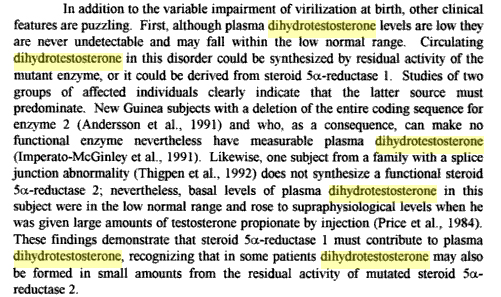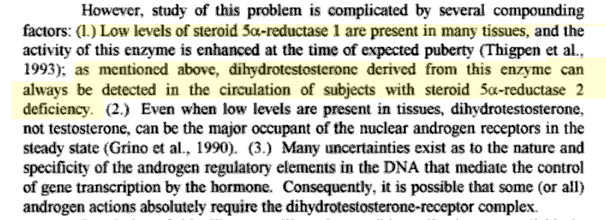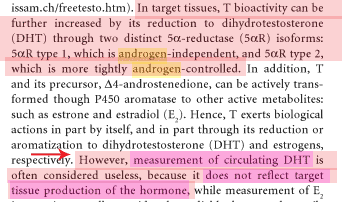It has been suggested around here a few times that testing for DHT via bloodtest may not necessarily be the most reliable indicator of true 5AR-II activity.
The attached screenshots may provide some evidence as to why, from books.google.com/books?hl=en&lr= … gsZAvVuuWM
and books.google.ca/books?id=hurRyWj … w#PPA61,M1
The question is, how MUCH does 5ARI and II contribute to serum DHT, respectively? That question can likely be answered by looking at the effects of a dual inhibitor of 5AR I & II (Dutasteride) vs Finasteride (5AR-II only).
pubmedcentral.nih.gov/articl … gure&id=F2
As you can see in the link above, 5AR-II contributes approximately 70% of serum DHT, while 5AR-I likely makes up the remaining 25-30%.
Thus, in addition to testing for Adiol-G, other methods to test ONLY for 5AR-II enzyme function/activity would involve:
-
Genetic PCR analysis to check for 5AR2 enzyme mutation
-
Genital Skin fibroblast culture/assay, since 5AR2 is abundant in genital foreskin and thus DHT binds to androgen receptors in the foreskin to exert it’s function: blackwell-synergy.com/doi/ab … alCode=bjd
“Fibroblast cultures have also been shown to be an excellent model for the screening of compounds which might block the expression of androgen action by competing for the androgen receptors. Cultured skin fibroblasts are a valuable model for the study of androgen and antiandrogen action in human skin.”




